
I wanted to make this third part sooner but it required an amount of time I never had. Even if I prefer watching traditional animation over digital, it's noticeable the benefit in speed, of course, it doesn't guarantee quality but it's something that I will eventually try.
As always, I have to recommend "Cartoon Animation" by Preston Blair. The bible of animation, if there's someting to learn about animation, it's there. I loved reading it and practicing along, as it translated in this series of tutorials.
Let's start...
Straight-Ahead and Pose Planning
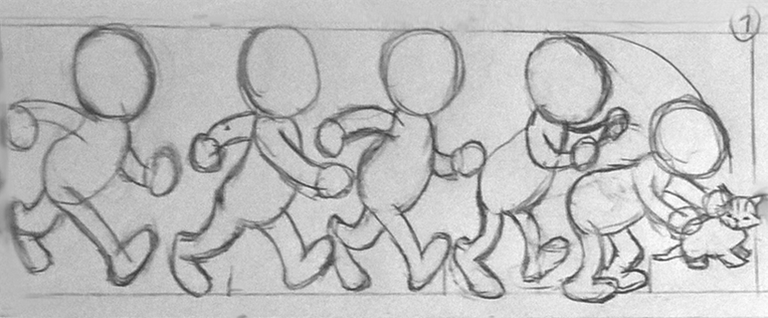
(1)
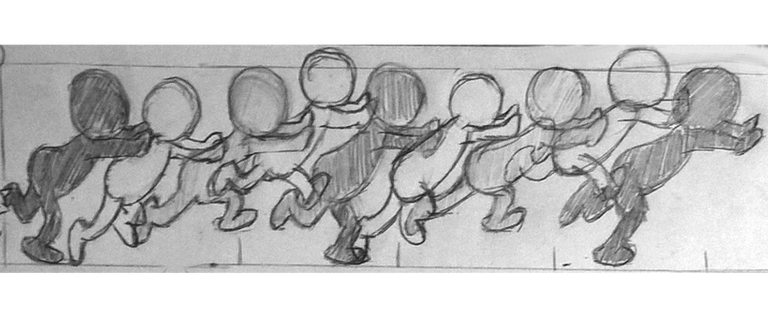
(2)
There are two different methods of animation: The linear or straight-ahead (1), referred to drawing a movement after the other on an incremental sequence. Pose planning (2) is the one that sets when drawing key poses or extremes, to later fill the action with drawings in between.
HERE is an example of an anime using pose planning gone wrong, with the hilarious commentary of Pewdiepie.
Arcs, curves and action routes
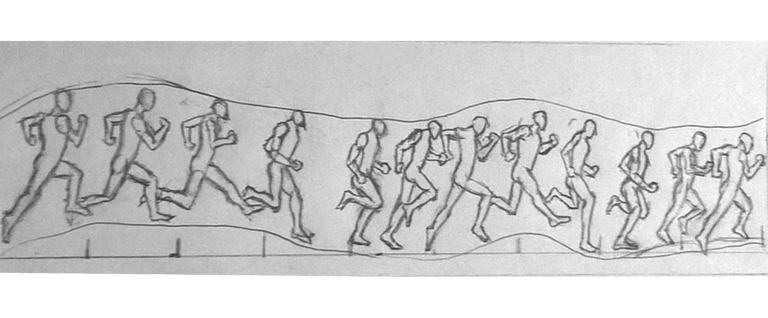
(3)
The characters move in routes of action that either curve or go straight. If a drawing is set on an action that doesn't fit the route or spacing plan, a jitter or an unrealistic action will occur.
You don't have to chart all the routes (3), if you flip the drawing you could tell any inconsistency.
Delayed secondary actions
When animating a character from one point to the other, you shouldn't draw all the body parts going at the same time. Instead, use the secondary delayed actions.
With secondary delayed actions is good to always pay attention to the movement of loose secondary objects like coattails, hair, fur, ears and tails.
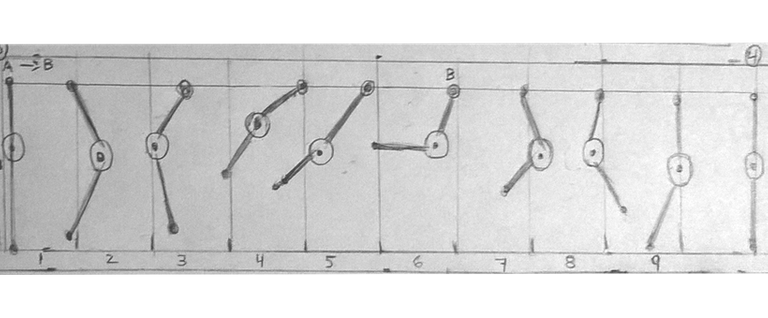
(4)
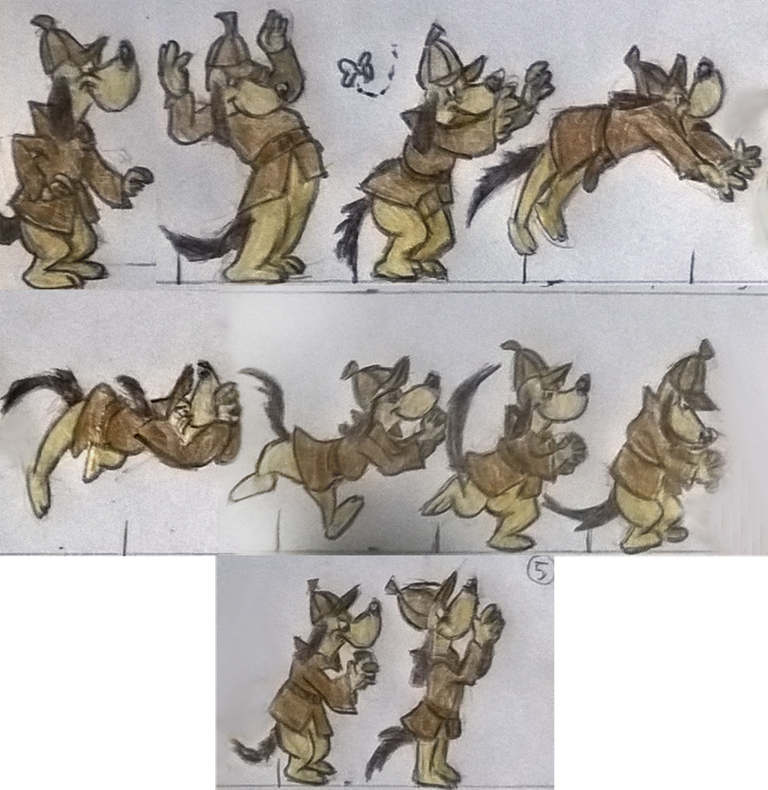
(5)
The double pendulum (4) illustrates a primary action of the bigger circle followed by two secondary actions of the pendulums. The same principle applies in the action of the dog trying to catch a butterfly (5).
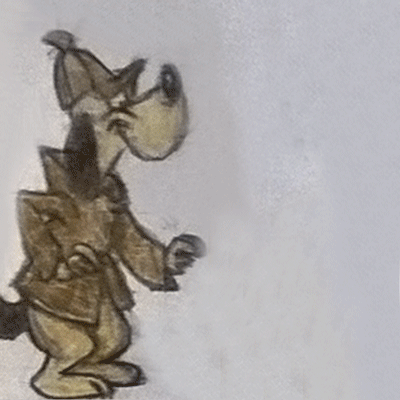
Expressing an attitude
Gestures, mannerisms, attitudes of postures or an emotional outburst, they all form part of the animation's language that translates emotions and reveal the character through your drawings. While art develops, characters start to 'think' assuming predictable behaviours, and they happen to be mostly hilarious. Disney took this to another level where at high points of the animations they are able to move people to tears. The animator became a 'real' actor.
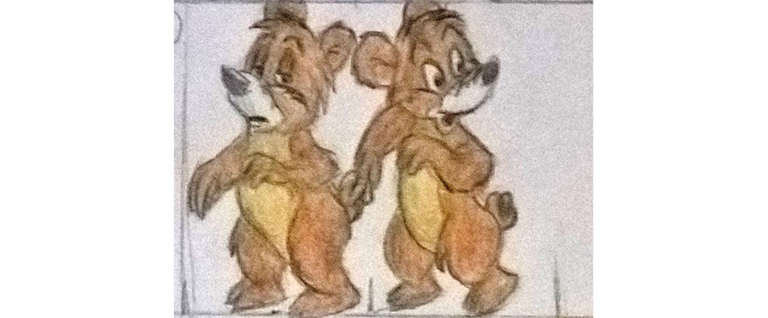
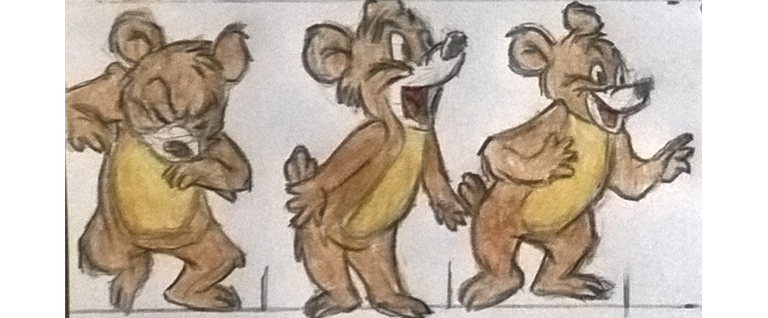
(6)
There are some rules for these actors: Never move or freeze without a meaning. Hold a gesture as long as possible so people can keep track and understand. And it's not recommended to over-gesture. Everyting can accomplish an important role: ears, tail, hair, legs, feet, clothes, etc. For the action, is useful to make a short script and thumbnail sketches (6).
Emotion - Gesture - Reacting
Start with emotion -it's important to involve with the character and act it out-, then draw the translation to the body, arms, legs and head.
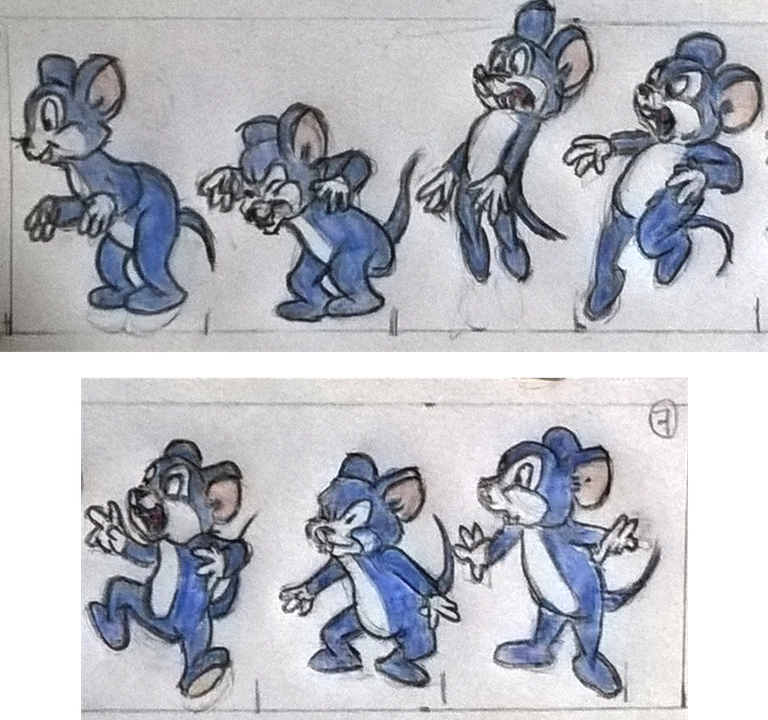
(7)
In the mouse scene (7), the mouse sinks into a crouch anticipation position or contraction which is always short so it can immediately shoot into the stretch position (also brief) and then in a fast movement goes back to it's regular appearence.

Women

Women move differently because of the balance. The knees and elbows tend to make inward arcs in action.
When the leg lifts the foot from the ground, the hips tilt as the support is removed, causing a chain reaction balancing the entire figure (8) (9)
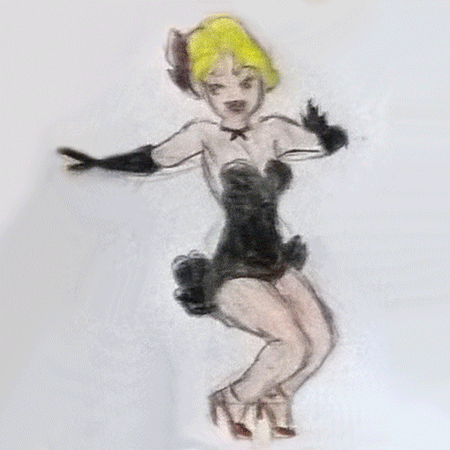
There are some topics that I didn't touch and are probably really interesting like backgrounds and staging the characters inside them, animating dialogue actions, and I'm sure there's a lot more. So I can't consider this series as finished but It will probably take a time to make and I'm grateful if you'll bear with me.
I hope you liked it!
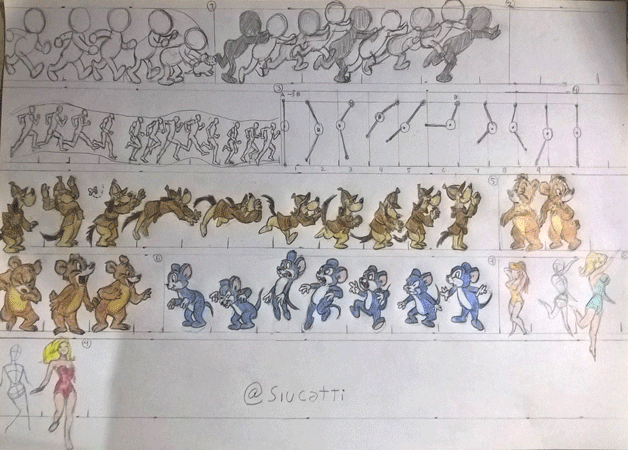
Tutorials
"How to draw cartoon animations": (PART 1) (PART 2)
"How to draw fantasy characters": (PART 1) (PART 2) (PART 3)
"How to draw animals": (PART 1) (PART 2) (PART 3)
"How to draw manga": (PART 1) (PART 2) (PART 3)